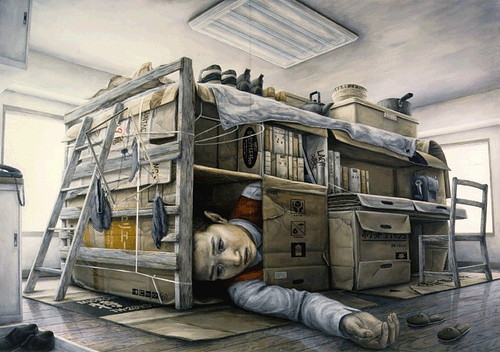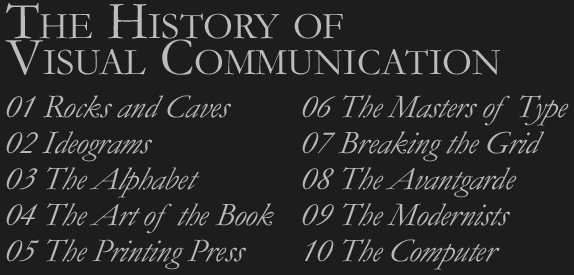"Deconstruct to Construct"
Analysing Images & Media Lesson
(Slideshare here)
1. Warm-up (3-5mins): With no direction, critically analyse the image below in small groups.
It is a painting done by Japanese artist, Tetsuya Ishida.
Be prepared to share your answers.

2. Discuss (3-5mins)
How did you go about analysing the artwork? What did you look for etc.?
Considering the answers you have heard, how would you assign this task to students?
How would you guide them through it? What type of criteria could you ask them to consider?
How would you guide their thought process etc. to evaluate it? What are the steps that could be involved?
Be prepared to share your answers.
3. Introduce Analysing an Image document. This is a document I usually use with my students. (5-8mins)
4. Apply the analysis sequence to the following image. (3-5mins)

Banksy
“Sale Ends Today”
Oil on canvas
2006
Has your analysis improved from the first picture? Sometimes it is just as important to say what was not done, as what was done.
Discussion (10 mins):
The Analysing an Image document is geared towards art.
What types of different media do we experience in our daily lives? Brainstorm. (basic pic)
As the use of screens and visuals continue to grow and grow, is it applicable to other visual media as well (ads, infographics, film, photography, websites, video games etc.)? Why or why not? If so, how? Are additional or different criteria required?
Share your thoughts.
Media Analysis graphic here.
Discussion: How does the use of media influence culture? How can the use of media influence what we do in the classroom and how students learn? How can we teach students to evaluate and create their own media?
Ideology in Media Studies
5. Other images to analyse if required:
What does the ad below convey? What is the intent? What is being sold?

How would you read the following commercial?
Is this graphic successful? Why or why not?

What techniques or devices were used in this photo? Does it convey a mood or message? If so, what?

How successful is the following website? What are they communicating? How successful is it? How could it be improved?

What tactics were used in the following commercial?
Misinformation: Media literacy skills are essential as misinformation is also prevalant.
Martin Luther King.org

DHMO.org

The Key to Media's Hidden Codes: Colors, camera angles and logos in the media can all prompt immediate associations with emotions, activities and memories. Learn to decode the intricate system of symbols that are a part of everyday life -- from media messages to traffic signs.
Further Resources if Interested:
Visual literacy is the ability to derive meaning from images of everything that we see. Art museums can teach visual literacy skills because art is a language. It's a form of communication. To be visually literate, you have to know the alphabet, the vocabulary and the grammar of seeing. (video)
Image Analysis
"Deconstructing - or picking images apart through the use of fine detail - is an essential part of studying the media. Media texts are largely constructed of images, and we take our visual literacy - our ability to read and understand these images - largely for granted. However, in Media Studies we need to be able to explain that decoding process, and describe the steps taken which allow us to derive meaning A from text B."
Information Literacy Resources (via Alan November)
"In a world of information overload, it is vital for students to not only find information but also determine its validity and appropriateness. Our information literacy material demystifies the process of finding and validating online information. These vital skills are needed as students prepare for our global economy."
The following 3 links were taken from the Authentic Assessment and Digital Media workshop wiki by Andrew Churches & Kim Cofino
The History of Visual Communication
A huge resource providing hours of reading pleasure.

Free online photo slidehow tools & photo imaging tools
Comments (0)
You don't have permission to comment on this page.